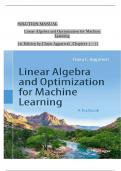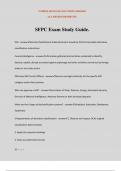Exam (elaborations)
Solution Manual for Linear Algebra and Optimization for Machine Learning 1st Edition by Charu Aggarwal, ISBN: 9783030403430, All 11 Chapters Covered, Verified
Solution Manual for Linear Algebra and Optimization for Machine Learning 1st Edition by Charu Aggarwal, ISBN: 9783030403430, All 11 Chapters Covered, Verified Latest Edition Solution Manual for Linear Algebra and Optimization for Machine Learning 1st Edition by Charu Aggarwal, ISBN: 9783030403430, ...
[Show more]




